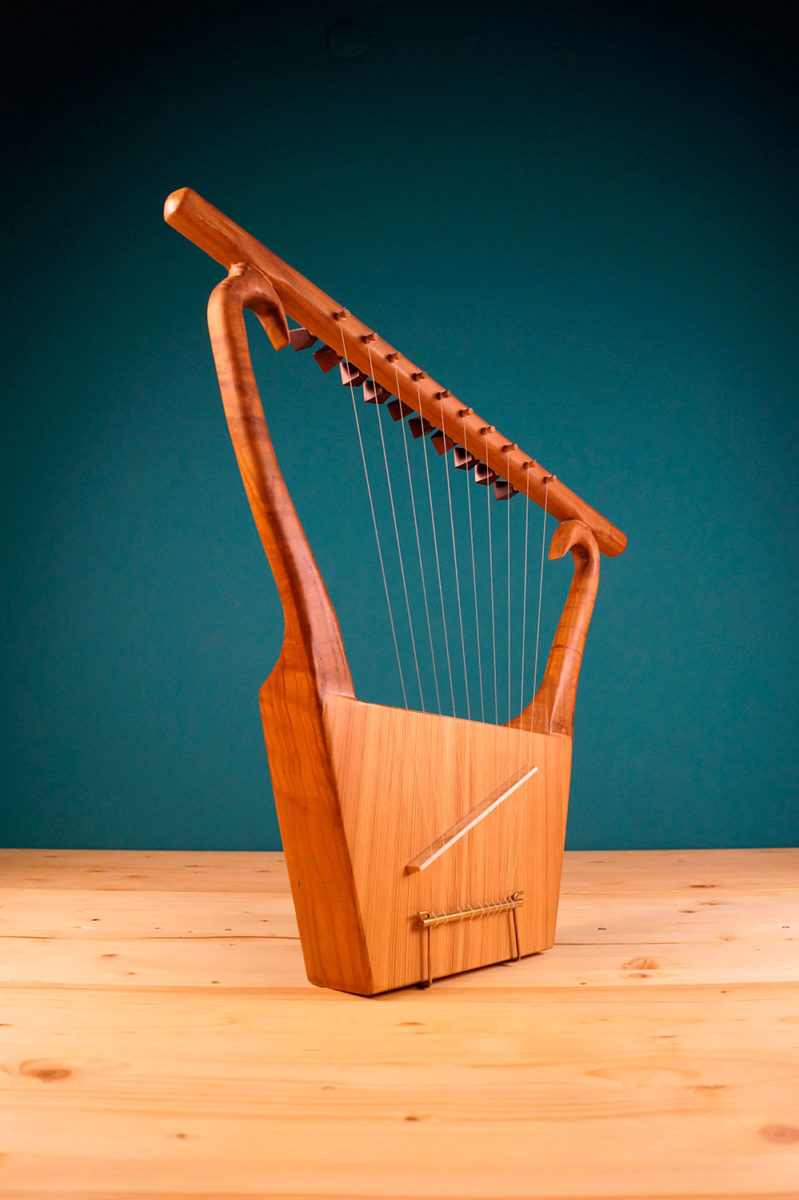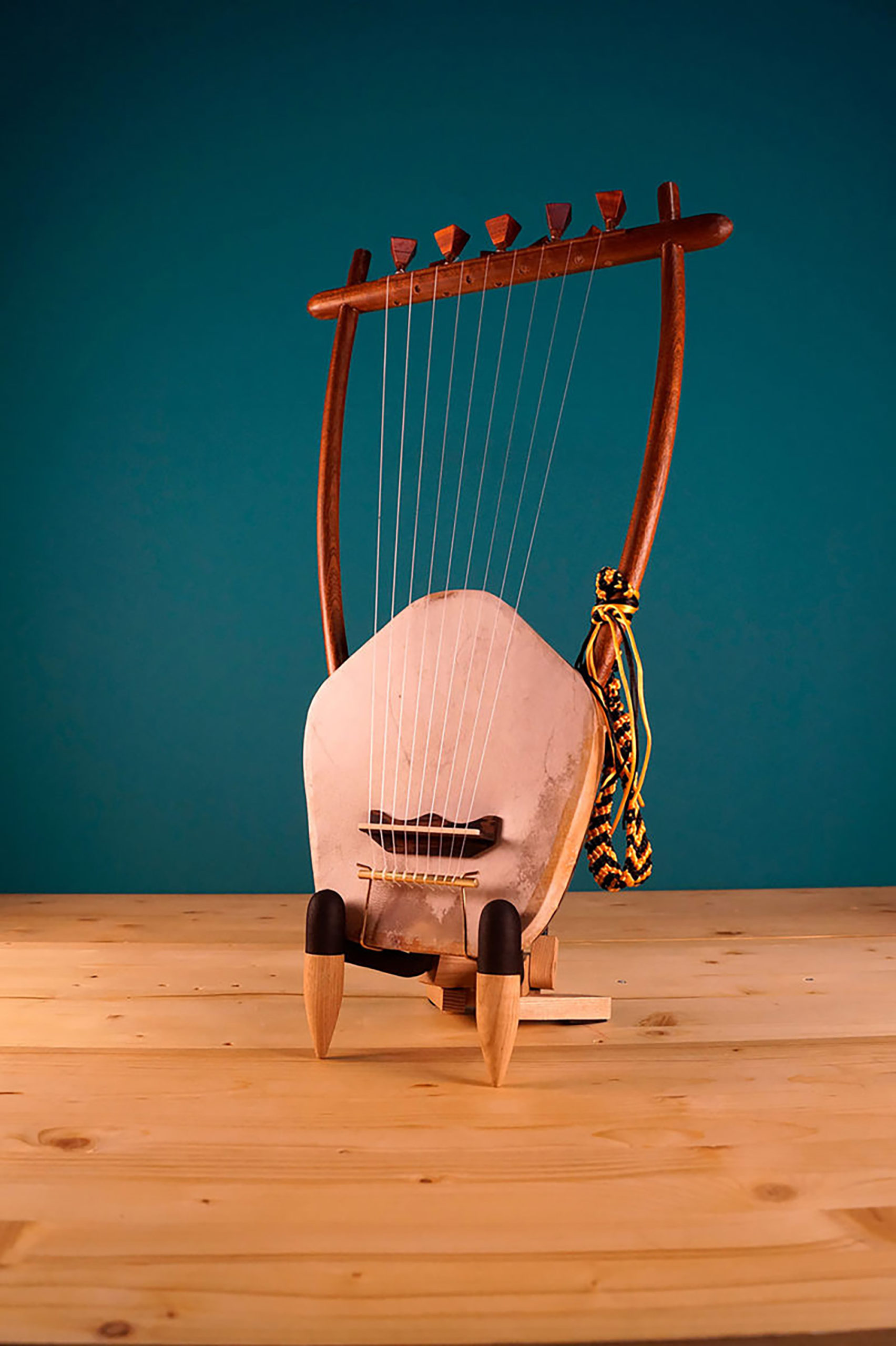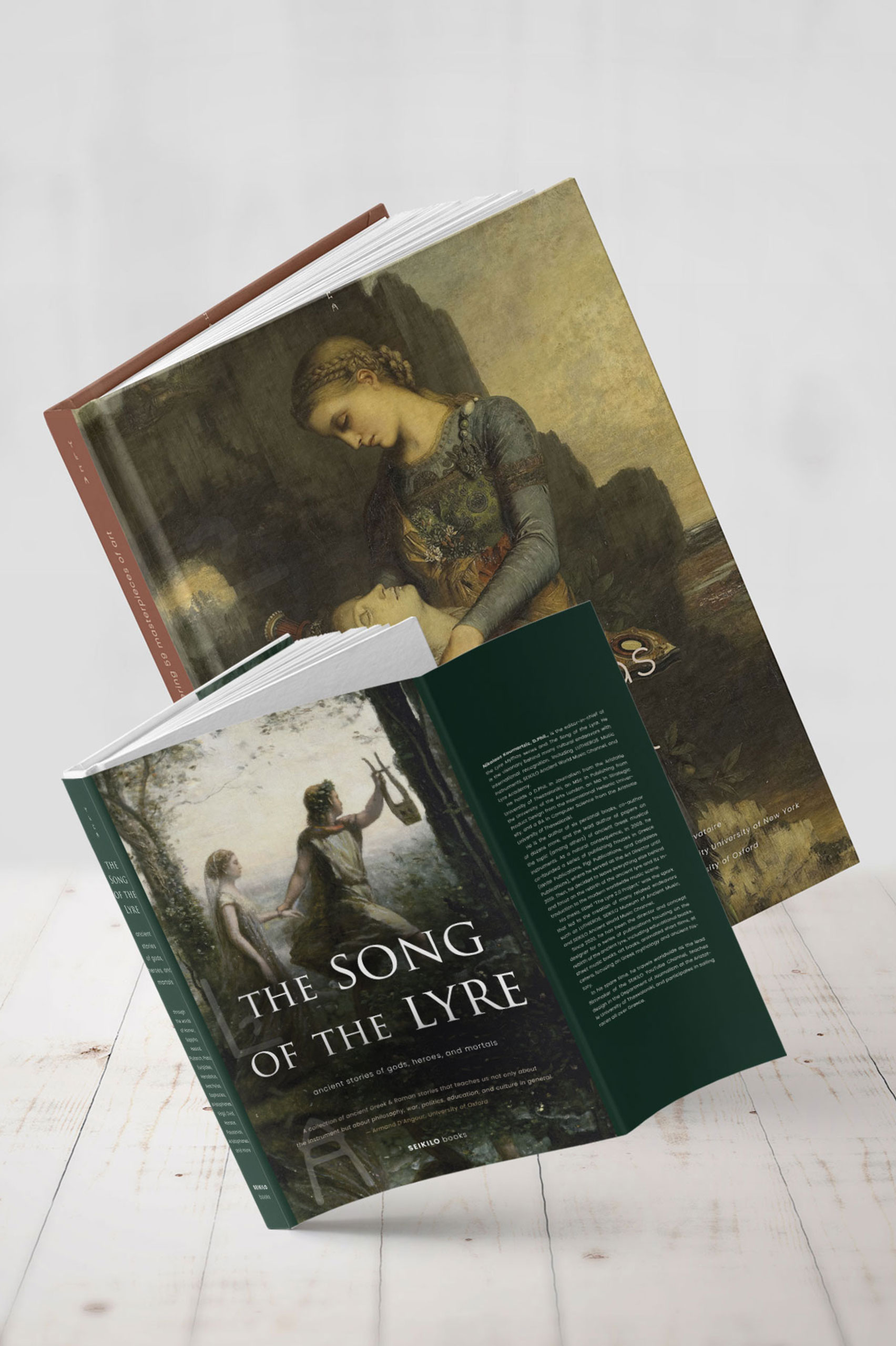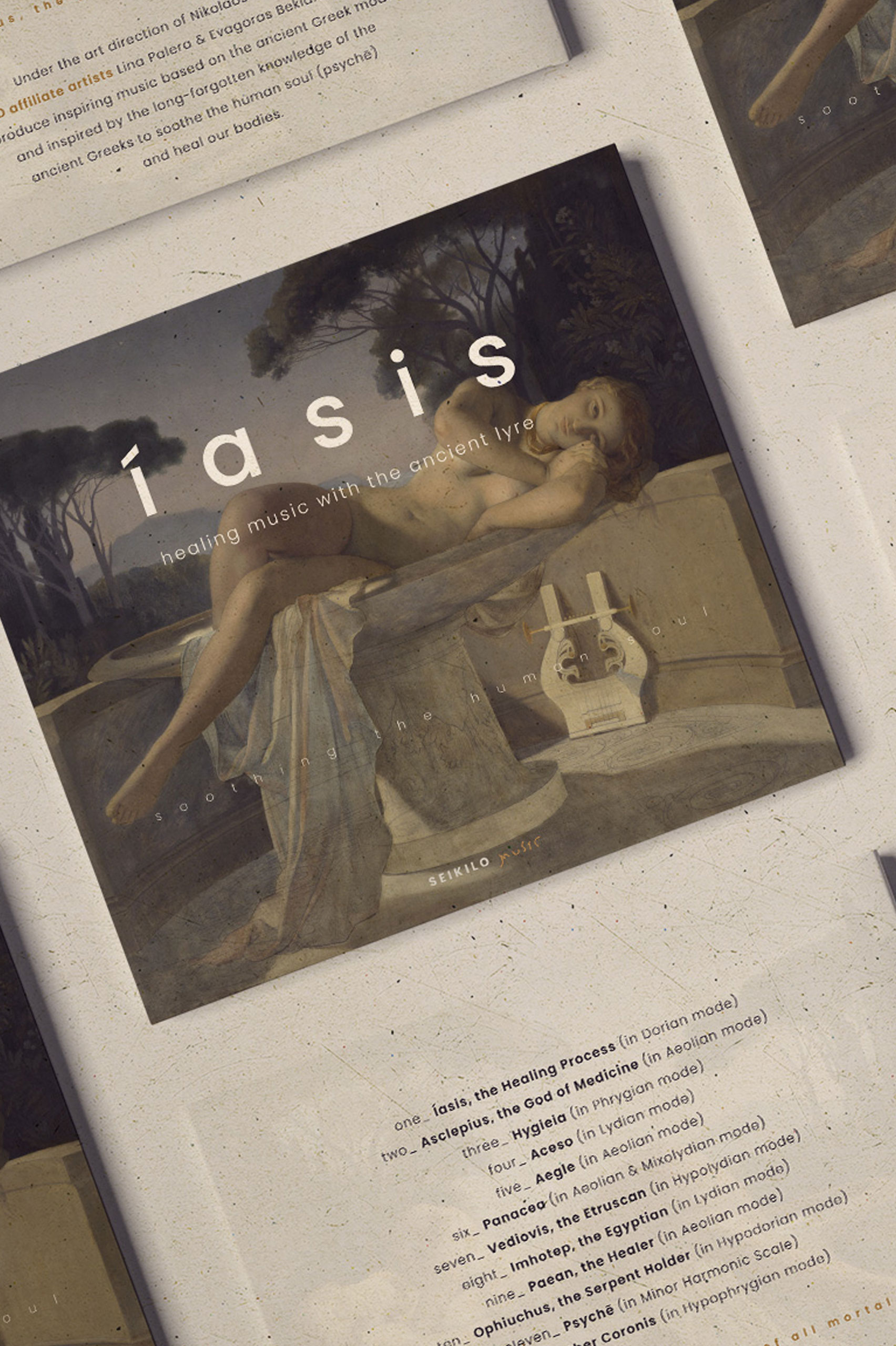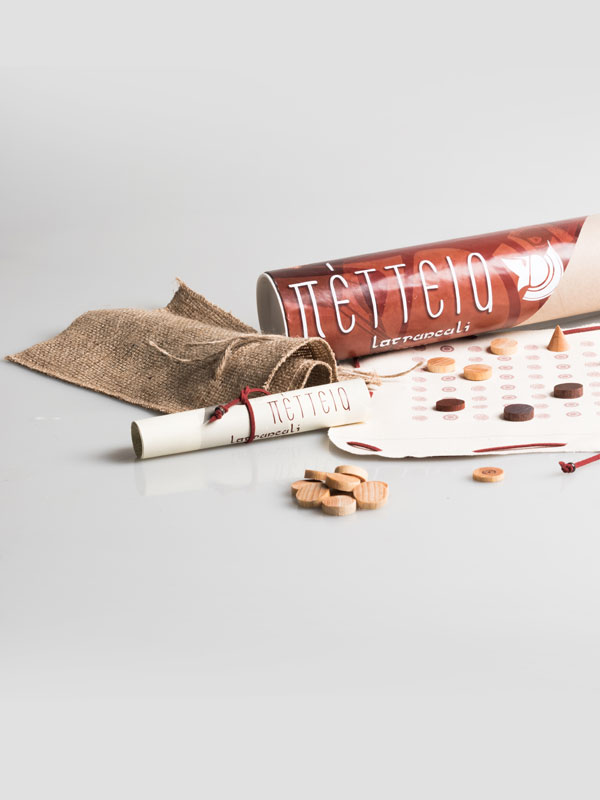Unique Artifacts
to cherish for a lifetime
Lyre of Har Meggido (King David)
2,650.00 €
“Whenever the spirit from God came on Saul, David would take up his lyre and play. Then relief would come to Saul; he would feel better, and the evil spirit would leave him.” – 1 Samuel 16:23
This is a replica of the ancient lyre of Meggido Har, played by King David himself and named after the ancient city of Meggido (aka Armageddon) sit atop a hill in the Jezreel Valley in what is today northern Israel. Careful excavations of 26 layers of debris have revealed that the area has been occupied for about 6000 years and that the city has been destroyed by wars and natural disasters many times, and then rebuilt.
King David has been depicted by artists as playing an extraordinary variety of instruments including a number of harps of decidedly medieval European design, as well as Greco-Roman lyres (lyres of the Greek god Apollo) that can be seen on the coins of first-century Roman-occupied Judea. The image appears on one of the famous “Megiddo ivories” that were excavated by archaeologist Gordon Loud, at what are believed to be the remains of a Late Bronze Age royal palace. The illustration is etched onto a sliver of a hippopotamus tooth, and probably adorned the lid of a box or some other decorative item. Since the hippo is found in the waters of the Upper Nile River, in Egypt, this piece shows the enormous range and influence of Egyptian culture throughout the Middle East in that period.
LUTHIEROS Lyre of Har Meggido has 10 strings, and it is ideal for anyone willing to learn how to play an ancient string musical instrument, as it provides more than a full octave. With the use of harmonics and other advanced playing techniques, a 10-strings lyre can produce three to four full octaves, along with the sharps!
The Late Bronze Age covers a period from roughly 1600 to 1200 B.C. which puts this piece very close to the time of the biblical King David, who is believed to have lived sometime around 1000 B.C. As most people know, according to the Old Testament, David was a musician, singer, and purportedly writer of many of the Psalms. He was said to have played a 10-string lyre (“kinnor” in Hebrew) which is exactly the type of instrument we see in the Megiddo ivory. The figure playing the lyre is dressed in the manner of a Canaanite, not an Egyptian, and is playing an instrument with 10 strings.
Manufactured at the premises of the ancient Europos (Northern Greece) by a family of musicians and luthiers, the LUTHIEROS Lyre of Har Meggido is made exclusively using natural materials available during the antiquity. All parts are made of quality wood with great musicality, the tuning pegs are made by ebony and mulberry wood, while the plectrum is manufactured by wood.
This ancient artifact was evolved to become a modern musical instrument ready to be used by both amateur and professional musicians. For all the minor (but very important) alterations, top-notch technologies were used during the prototyping phase (such as 3d Modeling and rapid prototyping) as part of University-based research by members of LUTHIEROS family. Key collaborations include the International Hellenic University and the Aristotle University of Thessaloniki.
Museum
Shop
Pieces of history
Bring the Museum
back Home
There is no benefit when music stands secret and hidden.
— Lucian, 2nd c. CE
SEIKILO Museum offers a fine selection of premium products closely related to our ancient world's musical heritage. Whether a replica of a lyre or another ancient musical instrument, sheet music of ancient surviving melodies, books about the history & myths of music in ancient Greece, or pristine quality recordings of ancient-inspired melodies, you can take with you a unique piece of history that you will cherish for a lifetime and even pass on to the next generation of your family.
Explore more in the options below...
Bring the Museum to your Home
Acquire an Artifact
Discover the magic of ancient music with the handcrafted instrument recreations of the unique SEIKILO collection, such as a lyre, a kithara, a phorminx, or a pandura!
Preserve the Stories
All the myths and stories you heard during your visit to the SEIKILO Museum are but a mere fragment of what was written. Explore the legacy of the lyre through SEIKILO museum-quality books!
Experience Ancient Music at Home
Replicate the amazing experience of a SEIKILO museum visit by listening to studio-quality recordings of surviving ancient melodies and contemporary compositions on ancient musical instruments.
Ancient Games, Modern Play
Αncient Greeks designed a series of highly educational games through which the youngsters sharpened their minds and developed critical thinking. Experience the timelessness of play with our series of ancient board games for the whole family, handcrafted with premium materials.

